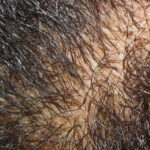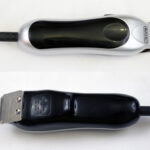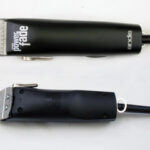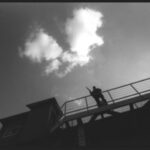Fade haircuts have been a favorite among men for several decades, and the popularity of fades extends to every culture and ethnic background. Quite simply, the fade is a tried-and-true style that projects masculinity, requires minimal upkeep and maintenance, and even helps to disguise a receding hairline or a thinning crown.
What makes a haircut a fade? A fade is characterized by a close-cut back and sides that gradually increases in length toward the top, or crown, of the head. The sides and back are generally cut using an electric clipper, and the top may be cut with scissors or a longer clipper guard. A true fade is blended, so that the top smoothly dissolves or “fades” into the shorter lengths on the sides and back. At the shortest lengths around the neck and ears, the scalp is usually visible through the hair.
There are dozens of variations of the fade haircut, but all of them are longer on the top than they are on the sides and back. Here are a few examples of popular fade haircuts.
1. The High and Tight. This is military-style cut that is perhaps the shortest of the fade haircuts. Also known as the “cadet” or the “marine” cut, a high and tight is closely cut with clippers, usually with a size 0 or 1 clipper guard on the sides. The top is also clipper cut with a slightly longer guard, usually either a size 1 or 2. Unlike the traditional fade in which the scalp is visible only around the neck and ears, the high and tight reveals a visible scalp throughout most of the sides and back, extending higher up the head than the traditional fade. This what the “high” refers to in the high and tight.
2. The Caesar. The Caesar cut is characterized by short clipper-cut lengths on the sides and back which are gradually faded to a scissor-cut top. The signature characteristic of the Caesar cut is the fringe or bang area, which is intentionally left longer. This additional length in the bang area allows the style to be worn either up or down in the front.
3. The Flat Top. Not all flat top haircuts are fades, but most of the popular varieties are. The classic flat top usually features sides and back that is cut with a size 1, 2, or 3 guard and a top that is perfectly flat and level. The top is usually cut using clippers and a “flat-topper” comb, which is specially designed to accomplish this style.
4. The 3-2-1 Fade. This is a quick and easy fade haircut which involves only three clipper guards. The longer of the guards, in this case a size 3, is used all over the head, and then a number 2 guard is used on the sides and back. Finally, the number 1 guard is used around the neck and ears.
5. The Scissor Fade. This is a fade cut that is performed only with scissors. This cut requires a higher level of expertise than a clipper fade, and is perfect for clients who want a longer fade style, but who don’t like the “fresh from the barbershop” look.
These are the main varieties of fade haircuts. Other types of fades are variations on the aforementioned haircuts.





